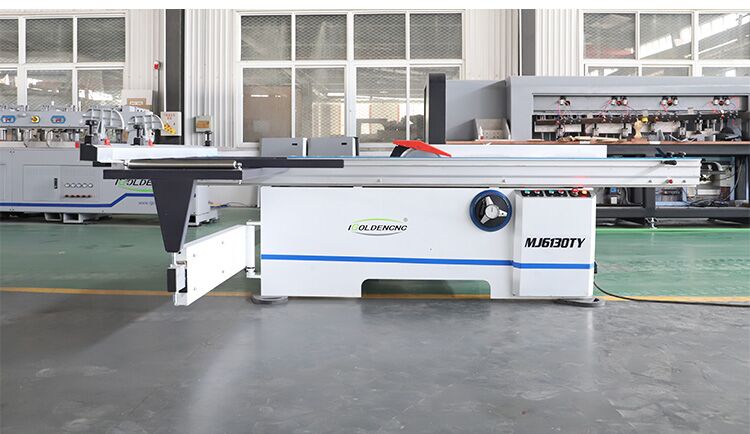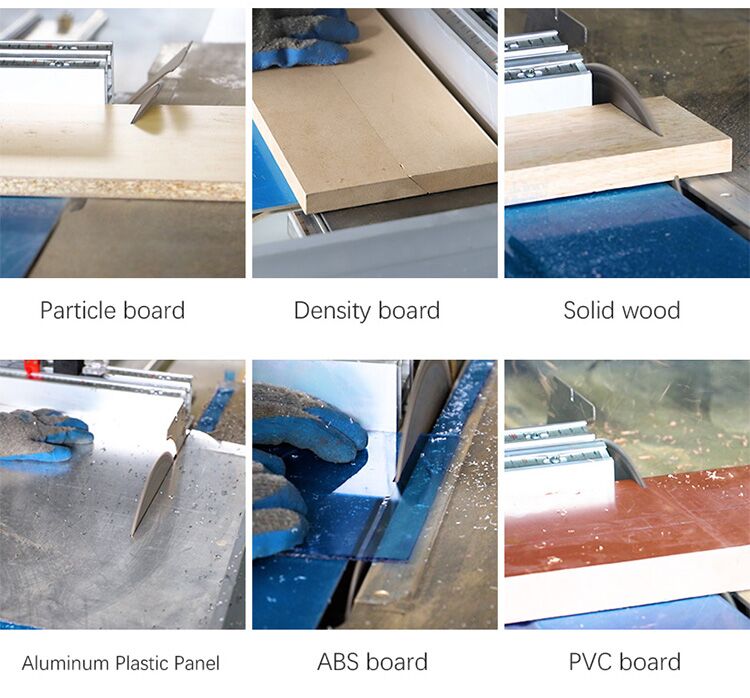CNC Panel Saw VS Manual Sliding Table Panel Saw
Tina2025-04-18T07:51:37+00:00A panel saw cuts sheets of material into sized boards. In woodworking, it is used to cut plywood, veneer, plastic, and other materials. Panel saws are categorized by their structural design—vertical or horizontal. They are also classified by their method of operation—manual control or computer numerical control (CNC). Because horizontal, computer-controlled machinery is preferred for production environments, a panel saw that features CNC technology is usually designed in a horizontal fashion.
CNC Panel Saw

CNC Versus Manual Control
Manual panel saws require the operator to guide the sawing mechanism across the workpiece. In elite models, this action requires minimal effort. Because a downward motion of the cutting mechanism is easier to achieve than a horizontal motion, vertical models have more cutting speed than manual models, although the speed differential is minimal. Vertical models also preserve the workspace, featuring a small footprint compared to most floor-standing saws. For companies that produce a low to moderate volume of panels, a manual, vertical panel saw could be an excellent choice.
Manual Sliding Table Panel Saw
45 degree panel saw and 90 degree panel saw
1.90 degree panel saw can only cut 90 degree right angle.
2.45 degree panel saw blade can be tilted, not only can cut right angle but also can effectively cut 0-45° sheet, used for solid wood furniture, panel furniture, and other manufacturers.

The sliding table is user friendly design with locking system in all position and an adjustable crosscut fence, capable of supporting large panels. The rip fence runs on a round hardened rail and is manually adjusted up to 1300mm. Equipped with a extendable crosscut miter fence and flip stops.
CNC panel saws offer the same benefits as other types of CNC machinery. For companies that produce a high volume of panels, the most important benefits are excellent repeatability across large production runs and, when the saw has a large table, the ability to produce panels at a high rate of speed. If you are choosing between a manual panel saw and a CNC model, you should also consider the other benefits of CNC machinery:
• Removes the operator from the vicinity of the cutting mechanism
• Eliminates waste pieces that result from human error
• Requires less training time than manual machinery
• Has a higher resale value than manual machinery
• A single operator can potentially manage two or more machines at once
These benefits can provide a positive financial impact that mitigates the cost of CNC equipment. Before you conclude that a CNC machine is too costly, consider the financial impact of eliminating human error from the cutting process and reducing on-the-job saw injuries.
Cost Considerations
Each grade of CNC panel saws is more expensive than the equivalent grade of manual panel saws. What can you do if you need the former but you only have the equipment budget for the latter? At IGOLDENCNC Machine, we recommend that you consider buying an industrial-grade CNC panel saw used. In addition to costing up to seventy per cent less than its original price, the saw could also perform like new for years to come, in spite of being pre-owned.
Advantages of Cnc Panel Saw over Manual Panel Saw
A panel saw machine is used to cut material, such as plywood, MDF, chipboard, veneer, and so on; it is the necessary equipment in woodworking. Now panel saws are categorized by their method of operation—manual control or computer numerical control (CNC). The manual panel cutting saw was very popular and widely used in the past. Still, computer-controlled machinery is becoming more popular because computer panel saw is safer and has higher effect efficiency in mass production. It is higher precision and higher speed in cutting material. Many customers advised that the CNC panel saw machine was their preferred machine.
Compared with a manual panel saw, the main advantages of a CNC panel saw are as follows:
High precision and high speed
As the living standard improved, people’s requirements were higher and higher, which required the manufacturers to produce high-quality furniture, so furniture manufacturers needed more advanced machinery in production; manual labour can’t meet the requirements now.
CNC panel saw machine with very high precision and high speed in cutting function makes the cutting profile more smooth and more perfect, and it ensures the edge banding effects and laminate foil or film effects are better.
The high-speed function makes the CNC panel saw high machine efficiency; compared with a manual saw, it equals the working capacity of about ten sets of manual sliding table saw machines. It makes the CNC panel seem more economical and save labour cost.
CNC panel saws offer the same benefits as other types of CNC machinery. For companies that produce a high volume of panels, the most important benefits are excellent repeatability across large production runs, when the saw has a large table, and the ability to produce panels at a high rate of speed. If you are choosing between a manual panel saw and a CNC model, you should also consider the other benefits of CNC machinery:
Removes the operator from the vicinity of the cutting mechanism
• Eliminates waste pieces that result from human error
• Requires less training time than manual machinery
• Has a higher resale value than manual machinery
• A single operator can potentially manage two or more machines at once
These benefits can provide a positive financial impact that mitigates the cost of CNC equipment. Before you conclude that a CNC machine is too costly, consider the economic effect of eliminating human error from the cutting process and reducing on-the-job saw injuries.
In the woodworking industry, CNC machinery is a trend shortly in the global market. Not only CNC panel saw machines but also CNC drilling machines, CNC routers, CNC engraving machines and so on.
Finally, if you want to learn more about the CNC panel saw machine working. Please contact our IGOLDENCNC salesman.
Leave a Reply
You must be logged in to post a comment.